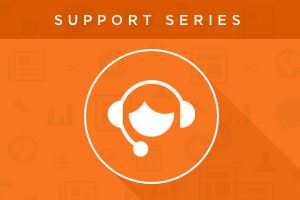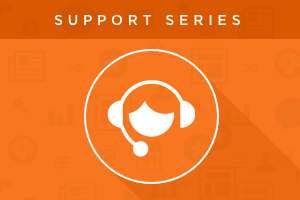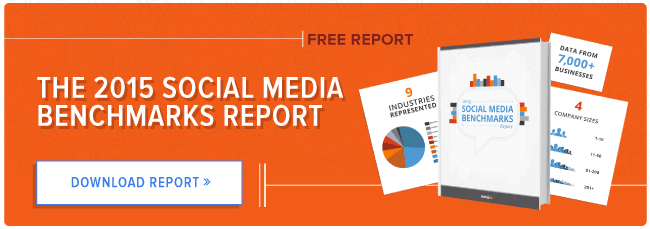 Picture this: your campaign is set, content is great, the boss is happy and the launch is imminent. Awesome, right? But what about your social strategy? After all, campaigns mean nothing if no one can see them. And social is where they get seen. As of January 2014, 74% of online adults use social networking sites, and by spending 6 hours per week on social media, over 66% of marketers see lead generation benefits. Ignoring social media means completely missing an opportunity to promote your campaign.
Picture this: your campaign is set, content is great, the boss is happy and the launch is imminent. Awesome, right? But what about your social strategy? After all, campaigns mean nothing if no one can see them. And social is where they get seen. As of January 2014, 74% of online adults use social networking sites, and by spending 6 hours per week on social media, over 66% of marketers see lead generation benefits. Ignoring social media means completely missing an opportunity to promote your campaign.

HubSpot's Social Inbox App is one of the newer ones at HubSpot, and one generates lots of questions from customers. Since it works by connecting to outside applications, it can require a bit of extra TLC to understand everything, especially when there's more than one marketer! Let's walk through HubSpot's Social Inbox App and how to set it up for the multiple users you have in your HubSpot account.
Setup
The first step in starting any Social Inbox setup is to connect your companies’ social accounts. This includes any available accounts for Twitter, Facebook, LinkedIn, Google+ and Xing. The guide on connecting accounts can be found here.
When deciding which social accounts to connect, start thinking about which accounts are actually relevant to your brand. In other words, where will your followers be looking for you? (Hint: it may not be all networks.) Then ask yourself, is it worth the time to create content for that network and will you be able to monitor it regularly? This guide should help you decide.
Once you have the networks in mind, it’s time to connect the accounts. Social Inbox will allow you to connect multiple accounts for each channel, but each company profile only needs to be connected once per portal. For example, once I connect the HubSpot Twitter handle, it does not need to be connected again by any other members of my team. I do, however, have to decide who should have access to that account.
This brings us to the social (within your company) part of Social Inbox.
Tip #1: Make sure 'Sharing settings' are correct for each of your accounts
When an account is connected in Social Settings, it is, by default, private to you. In order to allow other users to access that account for any purpose (ex. publishing, reporting, monitoring), it has to be shared with the team. This can be changed by either a portal Administrator or the user who attached the account by clicking “Manage sharing settings”.

Anyone who has access to Social Inbox will have access to shared accounts, so consider who should be able to see these accounts and who needs to use them. Do you have staff that needs to pull reports, create posts, or monitor social streams? The tool can do that. The catch is that a social account must be shared with the team for people (other than the person who connected it) to have access.
Tip #2: Make sure personal accounts are disabled (or enabled)
All company accounts (with the exception of Twitter) must be connected through an individuals’ personal account. For example, in order to connect the HubSpot LinkedIn page, someone who manages that account must first connect their personal LinkedIn account, so the HubSpot Company Page will then be accessible to the HubSpot tool.

Before you get concerned about the new guy accidently posting to your personal LinkedIn account, check to confirm the personal accounts are disabled in social settings. These accounts should be disabled by default, but it’s always a good idea to check, right?
This option is also accessible in the “Manage Sharing Settings” section of your Social tool.

Conversely, It is also important to recognize that if you want to allow posting to your personal account, (ex. if HubSpot’s CEO Brian Halligan wants to allow me to post on his behalf) you should make sure to check the box to enable this option.
Optimize
As marketers, we are always looking to measure, adjust and improve. It only makes sense to do the same with our processes. Now that we have set up the foudnation of Social Inbox, it’s time to optimize the way the tool is used.
Tip #3: Adjust your publishing schedule
Once the right accounts are connected and shared, the next step is figuring out when to share social broadcasts from them. By default, when scheduling posts, the social tool will suggest three times that correspond to generally heavy traffic times on social media.
It is important to remember, however, that each business is different. What is the best publishing time for a preschool targeting parents may not be the same best publishing time for a nightclub. It may be the same. The only way to know is to test.
To do this, I first suggest spending a few weeks gathering information around what time of day are your most successful posts. You can gauge this by looking at your scheduled posts and seeing which ones receive the most interactions.
Then you can go into the social “Publishing Schedule” to add or remove times of day based on your findings in your experimentation.

NOTE: These times are only meant to be the quickly accessible times when scheduling, and can be changed at any time as you continue to post if your audience tends to change.
Besides the publishing side, we also need to think of how our team is going to interact with current and potential customers. That is where our next step comes into play.
Tip #4: Set up Social Inbox Streams to look for keywords
The next most critical part of optimizing the Social Inbox App is creating the streams to monitor. Social inbox comes with a few default streams to start. These include Mentions, Retweets, Sent and Timeline. These are good to start, but they are by no means exhaustive.

In order to get the best results from social monitoring, it is important to create streams that will help you listen to conversations you would not otherwise hear. Think about it this way, to figure out what kinds of tweets would you like to hear.
Let’s try this exercise. When thinking about your industry:
- What are the most important keywords? (ex. Inbound, Inbound Marketing, Marketing Automation)
- Are any of these keywords specifically important for your business? (ex. HubSpot)
- Do you have specific hashtags? (ex. #INBOUND15, #IMW15)
- Are your competitors online with a social media prescence?
- Do you have specific product names?
It may be that you only pick a handful of these topics, but it is important to strategize based on which kinds of streams are relevant to you. I would also suggest creating different streams for these topics.
It is important to think about this strategy as a team. Especially if you plan to have different users monitoring each stream, plan to check at different frequencies. At HubSpot we have multiple streams for things like questions, support questions, partner mentions, etc. and each are checked by different people at varying frequencies of the day.
Publish
Now that Social Inbox is set up and optimized, we can actually use it. After all, what is the fun of setting up a new toy you can’t play with (no, puzzles don’t count). Publishing is your chance to show users that you have content of value to share, and why exactly they should be following you and spending money with your company. #InboundMarketing! What will save you time on this step is knowing how to adapt each social network.
Tip #5: Know the ins and outs of each network
Publishing through Social Inbox is as easy as pointing, typing, and clicking; but when creating a post, keep these tips in mind:
- A twitter post needs to be 140 characters. This means if you are scheduling posts on multiple networks at once (including Twitter), the post will have to be 140 characters. Alternatively, you can schedule posts on each network separately.

- LinkedIn cannot publish images with the an article. Images can be attached to publish with Twitter and Facebook, but when publishing to LinkedIn, you must select either a blog or a landing page to attach, and it will bring an image from that network.

- Google+ needs fixed widths for it’s featured images. This is probably not an issue you will come across, but if you happen to try posting to Google+ and are not seeing the image you need, use these instructions to insert a fixed width to your image.

Tip #6: Publish Consistently
This probably goes without saying, but it is a tip many teams miss. When setting up your social media strategy, try to come up with a consistent amount of times you can post, and find good content for those posts. Content can be a mix of curated and original, but should always provide some value to your readers. If you need some advice on putting together content for each, we have that here.
Now that you have mastered setting up Social Inbox for your team, you’re ready to take on the world. What other tips or tricks do you have for teams starting to use Social Inbox? Let us know in the comments!




![3 Service-focused Workflows to Empower Your Support Team [Support Series]](https://53.fs1.hubspotusercontent-na1.net/hubfs/53/service%20button.jpeg)
![How to Add Your Branding to a Marketplace Template [Support Series]](https://53.fs1.hubspotusercontent-na1.net/hubfs/53/Support/Support%20Series%20User%20Blog%20folder%20copy%202.png)
![Creating a Custom Date-Based Property Report [Support Series]](https://53.fs1.hubspotusercontent-na1.net/hubfs/53/Support/HubSpot%20Support%20Series%20Horizontal-603978-edited.png)
![Advanced Troubleshooting: The Network Tab [Support Series]](https://53.fs1.hubspotusercontent-na1.net/hubfs/53/HubSpot%20User%20Blog/HubSpot%20Support%20Series%20Horizontal.png)
![How to Update an Incorrect PDF Title [Support Series]](https://53.fs1.hubspotusercontent-na1.net/hubfs/53/HubSpot%20User%20Blog/Photo%20editors%20using%20laptop%20in%20meeting%20room%20at%20office-1.jpeg)
